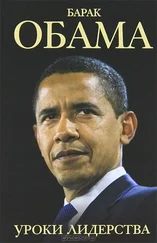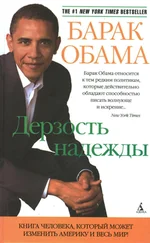Барак Обама - The Audacity of Hope
Здесь есть возможность читать онлайн «Барак Обама - The Audacity of Hope» весь текст электронной книги совершенно бесплатно (целиком полную версию без сокращений). В некоторых случаях можно слушать аудио, скачать через торрент в формате fb2 и присутствует краткое содержание. Жанр: Политика, на английском языке. Описание произведения, (предисловие) а так же отзывы посетителей доступны на портале библиотеки ЛибКат.
- Название:The Audacity of Hope
- Автор:
- Жанр:
- Год:неизвестен
- ISBN:нет данных
- Рейтинг книги:5 / 5. Голосов: 1
-
Избранное:Добавить в избранное
- Отзывы:
-
Ваша оценка:
- 100
- 1
- 2
- 3
- 4
- 5
The Audacity of Hope: краткое содержание, описание и аннотация
Предлагаем к чтению аннотацию, описание, краткое содержание или предисловие (зависит от того, что написал сам автор книги «The Audacity of Hope»). Если вы не нашли необходимую информацию о книге — напишите в комментариях, мы постараемся отыскать её.
The Audacity of Hope — читать онлайн бесплатно полную книгу (весь текст) целиком
Ниже представлен текст книги, разбитый по страницам. Система сохранения места последней прочитанной страницы, позволяет с удобством читать онлайн бесплатно книгу «The Audacity of Hope», без необходимости каждый раз заново искать на чём Вы остановились. Поставьте закладку, и сможете в любой момент перейти на страницу, на которой закончили чтение.
Интервал:
Закладка:
The image was mesmerizing, more organic than mechanical, as if I were glimpsing the early stages of some accelerating evolutionary process, in which all the boundaries between men — nationality, race, religion, wealth — were rendered invisible and irrelevant, so that the physicist in Cambridge, the bond trader in Tokyo, the student in a remote Indian village, and the manager of a Mexico City department store were drawn into a single, constant, thrumming conversation, time and space giving way to a world spun entirely of light. Then I noticed the broad swaths of darkness as the globe spun on its axis — most of Africa, chunks of South Asia, even some portions of the United States, where the thick cords of light dissolved into a few discrete strands.
My reverie was broken by the appearance of Sergey, a compact man perhaps a few years younger than Larry. He suggested that I go with them to their TGIF assembly, a tradition that they had maintained since the beginning of the company, when all of Google’s employees got together over beer and food and discussed whatever they had on their minds. As we entered a large hall, throngs of young people were already seated, some drinking and laughing, others still typing into PDAs or laptops, a buzz of excitement in the air. A group of fifty or so seemed more attentive than the rest, and David explained that these were the new hires, fresh from graduate school; today was their induction into the Google team. One by one, the new employees were introduced, their faces flashing on a big screen alongside information about their degrees, hobbies, and interests. At least half of the group looked Asian; a large percentage of the whites had Eastern European names. As far as I could tell, not one was black or Latino. Later, walking back to my car, I mentioned this to David and he nodded.
“We know it’s a problem,” he said, and mentioned efforts Google was making to provide scholarships to expand the pool of minority and female math and science students. In the meantime, Google needed to stay competitive, which meant hiring the top graduates of the top math, engineering, and computer science programs in the country — MIT, Caltech, Stanford, Berkeley. You could count on two hands, David told me, the number of black and Latino kids in those programs.
In fact, according to David, just finding American-born engineers, whatever their race, was getting harder — which was why every company in Silicon Valley had come to rely heavily on foreign students. Lately, high-tech employers had a new set of worries: Since 9/11 a lot of foreign students were having second thoughts about studying in the States due to the difficulties in obtaining visas. Top-notch engineers or software designers didn’t need to come to Silicon Valley anymore to find work or get financing for a start-up. High-tech firms were setting up operations in India and China at a rapid pace, and venture funds were now global; they would just as readily invest in Mumbai or Shanghai as in California. And over the long term, David explained, that could spell trouble for the U.S. economy.
“We’ll be able to keep attracting talent,” he said, “because we’re so well branded. But for the start-ups, some of the less established companies, the next Google, who knows? I just hope somebody in Washington understands how competitive things have become. Our dominance isn’t inevitable.”
AROUND THE SAME time that I visited Google, I took another trip that made me think about what was happening with the economy. This one was by car, not jet, along miles of empty highway, to a town called Galesburg, forty-five minutes or so from the Iowa border in western Illinois.
Founded in 1836, Galesburg had begun as a college town when a group of Presbyterian and Congregational ministers in New York decided to bring their blend of social reform and practical education to the Western frontier. The resulting school, Knox College, became a hotbed of abolitionist activity before the Civil War — a branch of the Underground Railroad had run through Galesburg, and Hiram Revels, the nation’s first black U.S. senator, attended the college’s prep school before moving back to Mississippi. In 1854, the Chicago, Burlington & Quincy railroad line was completed through Galesburg, causing a boom in the region’s commerce. And four years later, some ten thousand people gathered to hear the fifth of the Lincoln-Douglas debates, during which Lincoln first framed his opposition to slavery as a moral issue.
It wasn’t this rich history, though, that had taken me to Galesburg. Instead, I’d gone to meet with a group of union leaders from the Maytag plant, for the company had announced plans to lay off 1,600 employees and shift operations to Mexico. Like towns all across central and western Illinois, Galesburg had been pounded by the shift of manufacturing overseas. In the previous few years, the town had lost industrial parts makers and a rubber-hose manufacturer; it was now in the process of seeing Butler Manufacturing, a steelmaker recently bought by Australians, shutter its doors. Already, Galesburg’s unemployment rate hovered near 8 percent. With the Maytag plant’s closing, the town stood to lose another 5 to 10 percent of its entire employment base.
Inside the machinists’ union hall, seven or eight men and two or three women had gathered on metal folding chairs, talking in muted voices, a few smoking cigarettes, most of them in their late forties or early fifties, all of them dressed in jeans or khakis, T-shirts or plaid work shirts. The union president, Dave Bevard, was a big, barrel-chested man in his mid-fifties, with a dark beard, tinted glasses, and a fedora that made him look like a member of the band ZZ Top. He explained that the union had tried every possible tactic to get Maytag to change its mind — talking to the press, contacting shareholders, soliciting support from local and state officials. The Maytag management had been unmoved.
“It ain’t like these guys aren’t making a profit,” Dave told me. “And if you ask ’em, they’ll tell you we’re one of the most productive plants in the company. Quality workmanship. Low error rates. We’ve taken cuts in pay, cuts in benefits, layoffs. The state and the city have given Maytag at least $10 million in tax breaks over the last eight years, based on their promise to stay. But it’s never enough. Some CEO who’s already making millions of dollars decides he needs to boost the company stock price so he can cash in his options, and the easiest way to do that is to send the work to Mexico and pay the workers there a sixth of what we make.”
I asked them what steps state or federal agencies had taken to retrain workers, and almost in unison the room laughed derisively. “Retraining is a joke,” the union vice president, Doug Dennison, said. “What are you going to retrain for when there aren’t any jobs out there?” He talked about how an employment counselor had suggested that he try becoming a nursing aide, with wages not much higher than what Wal-Mart paid their floor clerks. One of the younger men in the group told me a particularly cruel story: He had made up his mind to retrain as a computer technician, but a week into his courses, Maytag called him back. The Maytag work was temporary, but according to the rules, if this man refused to accept Maytag’s offer, he’d no longer be eligible for retraining money. If, on the other hand, he did go back to Maytag and dropped out of the courses he was already taking, then the federal agency would consider him to have used up his one-time training opportunity and wouldn’t pay for any retraining in the future.
I told the group that I’d tell their story during the campaign and offered a few proposals that my staff had developed — amending the tax code to eliminate tax breaks for companies who shifted operations offshore; revamping and better funding federal retraining programs. As I was getting ready to go, a big, sturdy man in a baseball cap spoke up. He said his name was Tim Wheeler, and he’d been the head of the union at the nearby Butler steel plant. Workers had already received their pink slips there, and Tim was collecting unemployment insurance, trying to figure out what to do next. His big worry now was health-care coverage.
Читать дальшеИнтервал:
Закладка:
Похожие книги на «The Audacity of Hope»
Представляем Вашему вниманию похожие книги на «The Audacity of Hope» списком для выбора. Мы отобрали схожую по названию и смыслу литературу в надежде предоставить читателям больше вариантов отыскать новые, интересные, ещё непрочитанные произведения.
Обсуждение, отзывы о книге «The Audacity of Hope» и просто собственные мнения читателей. Оставьте ваши комментарии, напишите, что Вы думаете о произведении, его смысле или главных героях. Укажите что конкретно понравилось, а что нет, и почему Вы так считаете.

![Барак Обама - Дерзость надежды. Мысли об возрождении американской мечты [The Audacity of Hope]](/books/26630/barak-obama-derzost-nadezhdy-mysli-ob-vozrozhdenii-thumb.webp)










